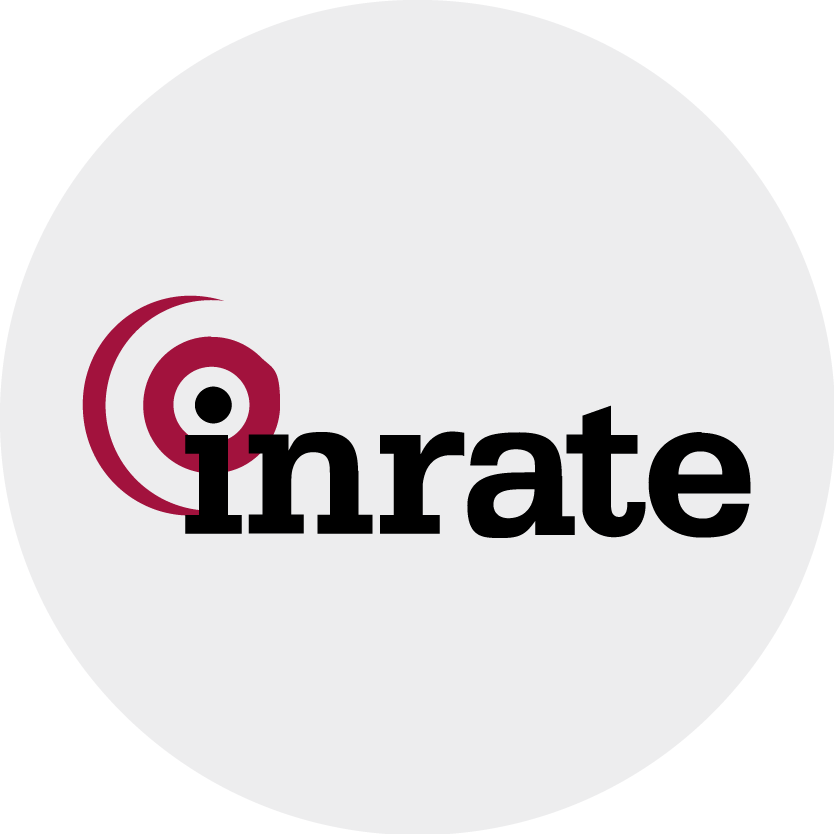The Missing 'S' in ESG Regulation: Gaining Traction
For years, the “E” in ESG has dominated the regulatory landscape, with the EU Green Taxonomy serving as a cornerstone for identifying and directing investments towards environmentally sustainable activities. However, the “S” that encompasses critical social issues like labor rights, human well-being, and inclusive development has proven more challenging to standardize, often lacking common definitions and robust regulatory frameworks.
This gap is being addressed. The EU Social Taxonomy, currently in its proposal phase, aims to bring social sustainability closer in line with its environmental counterpart. This framework is intended to provide greater clarity and transparency for investors, companies, and financial markets. As issues affecting society, including ethical supply chains, widening inequality, and human rights, increasingly demonstrate their financial materiality, the Social Taxonomy is poised to influence fiduciary responsibility in the 21st century.
Understanding the EU Social Taxonomy: A Framework for Impact
What It Is and Who It's For
The European Commission tasked the Platform on Sustainable Finance (PSF) with developing recommendations for the EU Social Taxonomy. Unlike its green equivalent, which focuses on climate change mitigation and adaptation, and other environmental objectives, this framework specifically targets human and societal well-being.
This taxonomy is designed to serve a broad range of stakeholders:
- Financial institutions and investors: Seeking clearer guidance and reliable metrics for assessing social performance and directing capital responsibly.
- Corporations: Particularly those with disclosure obligations under ESG frameworks, requiring consistent standards for reporting and demonstrating social contributions.
- Policymakers: Aiming to foster a robust, equitable, and sustainable economic transition across the EU.
Crucially, the Social Taxonomy integrates the “Do No Significant Harm” (DNSH) principle, applied to social objectives. For instance, a company, even if excelling on environmental metrics, would not be deemed socially sustainable if it disregards fundamental labor regulations or human rights. Furthermore, compliance with “Minimum Safeguards” linked to international human rights and labor standards (like the UN Guiding Principles on Business and Human Rights and ILO core conventions) is a foundational requirement for any activity to be considered sustainable.
Read more: EU Taxonomy Data Solutions
Key Objectives Defined
The Social Taxonomy delineates three primary social objectives, each with detailed sub-objectives:
- Decent work (including value-chain workers): This objective is rooted in international labor standards, encompassing fair wages, robust health and safety measures, freedom of association, and the eradication of forced and child labor, extending these considerations across the entire value chain.
- Adequate living standards and well-being for end-users: This aims to improve access to essential services and products that enhance quality of life. Examples include investments in affordable housing, high-quality healthcare services, inclusive education, and access to clean water and sanitation.
- Inclusive and sustainable communities and societies: This objective addresses the broader societal impact of economic activities. It promotes social equity, access to opportunities for all, protection of vulnerable populations, and ensuring that economic development benefits, rather than harms, local communities.
What's in It for Investors: Financial Materiality and Opportunity
Access to a New Class of Social Assets
Despite growing returns and societal demand, social investments have often lacked clear classification. The Social Taxonomy is expected to facilitate capital allocation towards:
- Affordable housing projects: For example, France’s substantial commitment to housing by 2030 could be clearly categorized and supported under a defined social asset class.1
- Elderly care infrastructure: Crucial for aging populations across Europe, such as in Germany and Italy, enabling targeted investment in essential services.
- Inclusive education initiatives: Especially those aimed at bridging digital divides and enhancing skills for future workforces.
Beyond specific projects, the taxonomy is expected to catalyze the growth of thematic social bonds, blended finance models, and private equity strategies that align with measurable social outcomes. The EU’s own NextGenerationEU stimulus package (€800 billion), with its significant allocation to social priorities, stands to be more effectively aligned with this new taxonomy.2
Improving ESG Integration and Fiduciary Responsibility
Investors face increasing demands to report quantifiable social impacts, moving beyond subjective ESG ratings towards concrete, decision-grade data. The Social Taxonomy will:
- Provide a common language: For assessing social risks and opportunities across diverse investments.
- Support compliance: With international frameworks such as the UN Guiding Principles on Business and Human Rights (UNGPs), OECD Guidelines for Multinational Enterprises, and ILO conventions.
- Mitigate litigation risk: As demonstrated by shareholder lawsuits concerning alleged forced labor in supply chains, robust social compliance frameworks, underpinned by the taxonomy’s metrics, can help anticipate and mitigate such legal exposures.

How the Social Taxonomy Interacts with the Green Taxonomy and SFDR
The Interdependence of E and S Objectives
Environmental and social goals are often intertwined. The Social Taxonomy highlights this interdependence:
- A green hydrogen plant, while cutting carbon emissions, would not meet Social Taxonomy criteria if it exposes workers to unsafe labor conditions or exploits local communities.
- Similarly, the development of affordable housing units, while achieving social objectives, should also integrate energy efficiency and sustainable materials to meet green compliance thresholds.
This necessitates a “dual-alignment lens,” where sustainability is viewed as a dynamic interplay of environmental, social, and governance factors.
Role of SFDR (Sustainable Finance Disclosure Regulation)
The SFDR requires financial products (under Articles 8 and 9) to disclose how they integrate “sustainable” and “social” characteristics. The Social Taxonomy is anticipated to provide critical scaffolding to:
- Define “socially sustainable investment”: Offering concrete criteria.
- Improve consistency: In disclosures across the financial industry, enhancing comparability and reducing “social washing.”
- Strengthen ESG fund labeling: Giving investors greater confidence in the social claims of investment products.
Read more: Sustainable Finance Disclosure Regulation (SFDR) Solutions: Trends & Tools
Implications for Financial Institutions: Capital Allocation, Product Structuring, and Stewardship
Designing Socially Aligned Investment Products
The Social Taxonomy is expected to accelerate the development of innovative financial vehicles, such as Just Transition Funds, designed to support workers and communities in the shift away from fossil fuel-dependent economies, and Social Infrastructure Funds, financing essential public services like hospitals, schools, and low-income housing. By providing a framework for taxonomy-aligned labeling, the EU empowers institutions to launch differentiated products, meeting the growing demand for impact-driven investments, attract ESG-focused capital from institutional and retail investors, and navigate regulatory scrutiny with greater clarity.
Enhanced Due Diligence and Reporting Expectations
Aligning with the Social Taxonomy will necessitate deeper data collection and analysis on key social dimensions within portfolios, including human rights practices across supply chains, worker protection and fair labor standards, diversity, equity, and inclusion (DEI) metrics, and community relations and stakeholder engagement. This will require financial institutions to engage proactively with portfolio companies, establishing new Key Performance Indicators (KPIs) for social impact, mirroring the evolution seen with environmental metrics under the Green Taxonomy.
Stewardship and Shareholder Engagement Shifts
The taxonomy will reinforce the expectation that investors engage actively on social issues. This means increased focus on promoting living wages and fair compensation practices, ensuring ethical and transparent supply chains, advocating for robust workplace diversity and inclusion, and demanding strong board-level oversight of social issues. This represents a shift from passive ownership to active stewardship, grounded in measurable social standards and a clear understanding of systemic social risks.
Strategic Approaches for Financial Institutions
For financial institutions, particularly those focused on delivering real impact and robust ESG solutions like Inrate, navigating the emerging social taxonomy requires a proactive approach:
- Be Proactive: Begin mapping investment portfolios against the three core social objectives of the taxonomy. Identify areas of strong alignment and potential gaps.
- Engage Upstream: Collaborate with investee companies to co-develop Key Performance Indicators (KPIs) aligned with social goals. This foresight will streamline future reporting and due diligence processes.
- Rethink Risk: Recognize that labor unrest, growing inequality, and human rights violations are material ESG risks with tangible financial implications. The Social Taxonomy offers a structured framework to evaluate and mitigate these risks.
- Innovate Products: Explore and develop innovative financial products, such as “Green + Social Bonds” or “Just Transition” equity funds. Early adoption positions institutions as leaders in this evolving market.

Conclusion
The EU Social Taxonomy reflects a fundamental truth: sustainable finance requires social sustainability. In a world grappling with escalating inequality, dynamic population shifts, and vulnerable supply chains, the “S” in ESG is no longer optional.
Financial institutions that delay their engagement may face increased adaptation challenges. Those that proactively explore strategies, engage effectively with stakeholders, and develop taxonomy-aligned products are likely to gain a competitive advantage in navigating the evolving investment landscape.
Fiduciary duty will increasingly encompass ensuring that returns are not generated at society’s expense, but contribute to its betterment. The Social Taxonomy is designed to make this vision economically practical, and its influence is expected to grow significantly.
Sources
Contributor
Frequently Asked Questions
1. What is the EU Social Taxonomy and how does it differ from the Green Taxonomy?
The EU Social Taxonomy is a proposed classification system by the European Commission, developed with advice from the Platform on Sustainable Finance, designed to define what constitutes a socially sustainable economic activity. Unlike the EU Green Taxonomy, which focuses on six environmental objectives (e.g., climate change mitigation, biodiversity), the Social Taxonomy addresses human rights, labor conditions, inclusive development, and overall social well-being. Both frameworks share the “Do No Significant Harm” (DNSH) principle and require compliance with Minimum Safeguards, but apply them to their respective environmental or social criteria.
2. Why is the EU Social Taxonomy important for investors and financial institutions?
The EU Social Taxonomy provides clear, standardized criteria for assessing social sustainability in investments, helping financial institutions identify, mitigate, and report on social risks (e.g., labor violations, inequality, supply chain ethics). It supports compliance with global standards like the UNGPs and OECD Guidelines, and is expected to facilitate new investment opportunities through clearly defined thematic social bonds and social infrastructure funds.
3. What are the key objectives defined under the EU Social Taxonomy?
The EU Social Taxonomy outlines three main social objectives, each with detailed sub-objectives:
- Decent work across value chains: Focusing on fair wages, worker health and safety, freedom of association, and human rights diligence throughout supply chains.
- Adequate living standards and well-being for end-users: Promoting access to essential services and products such as affordable housing, healthcare, and education.
- Inclusive and sustainable communities and societies: Targeting social equity, access to opportunities, protection of vulnerable populations, and positive impacts on local communities.
4. How does the EU Social Taxonomy impact ESG fund reporting and the SFDR?
The Social Taxonomy is anticipated to enhance transparency and consistency in ESG fund disclosures under the Sustainable Finance Disclosure Regulation (SFDR), particularly for financial products categorized under Articles 8 and 9. By providing clear definitions, it aims to help financial market participants define what constitutes a “social characteristic” or a “sustainable investment” with a social objective, thereby improving the accuracy of ESG fund labeling and reducing the risk of social washing.
5. Is the EU Social Taxonomy legally binding, and how should financial institutions prepare?
Currently, the EU Social Taxonomy is not legally binding legislation. It is a proposed framework from the Platform on Sustainable Finance, and its future legislative status is yet to be determined by the European Commission. However, its principles are gaining influence and are expected to inform future EU ESG regulations, such as the Corporate Sustainability Due Diligence Directive (CSDDD). Financial institutions should proactively prepare by mapping their investment portfolios against the proposed social objectives, engaging with investee companies to collect relevant social data, and exploring the development of new investment products aligned with these social criteria.


